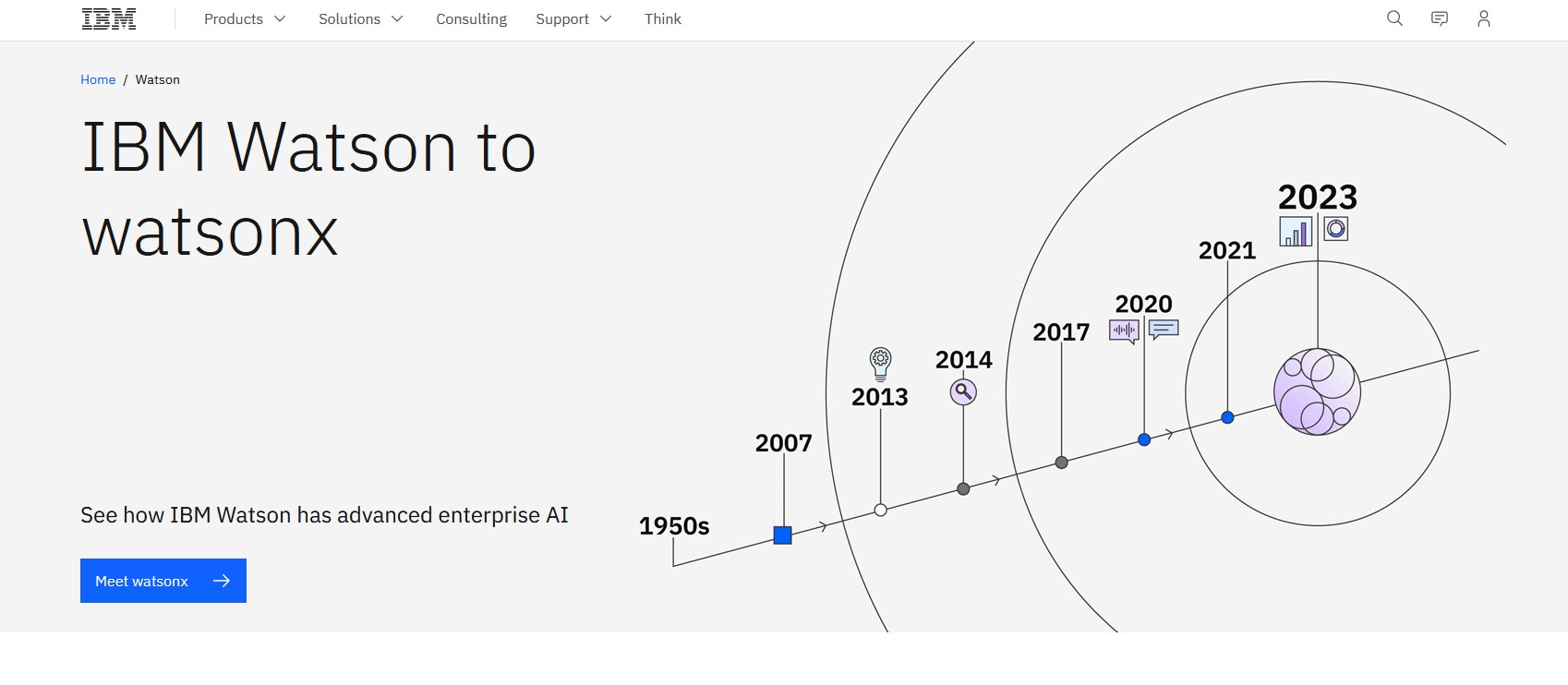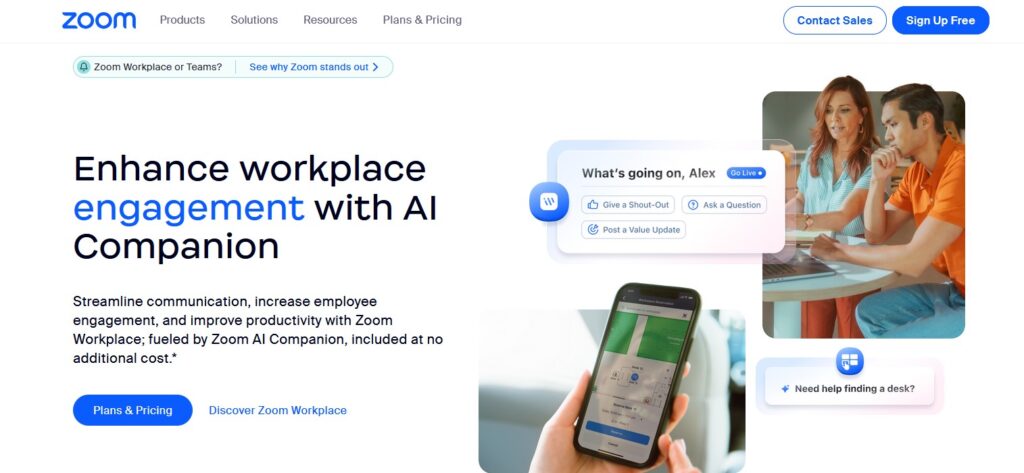Ethics in AI-driven compliance involves adhering to standards that prevent harm and foster trust. Ethical breaches, especially by executives, can damage an organization’s culture and lead to poor decision-making. Tech CEOs have been repeatedly accused of “hyping up” the functionality of the AI capabilities of their products over the last few years. Some of these accusations go far enough to accuse the entire AI space of being a bubble on the verge of popping.
Read on for several good examples of times companies made these claims and then got caught.
Scrutiny like this is a key component of the function of regulatory bodies like the Department of Justice (DOJ) and the Securities and Exchange Commission (SEC), which hold decision-makers accountable for their actions. As AI hype emerges in many sectors for good or for ill, the potential consequences of unethical behavior have become even more far-reaching and detrimental to both organizations and society as a whole.
II. Understanding Ethics in AI
Defining Ethics in the Context of AI
Ethical lapses can lead to significant legal and financial repercussions for organizations of all kinds. AI has been touted as the “next big thing” in the tech sector for some time now. It’s important for AI developers and companies acting as AI boosters to prioritize transparency and accountability to build public trust, maintain a positive reputation, and ensure the long-term viability of their brand.
The high-profile cases of Sam Bankman-Fried and Elizabeth Holmes demonstrate the dangers of repeatedly overpromising and ultimately underdelivering on product functionality. Bankman-Fried’s guilty verdict highlighted that the SEC sees a clear line between simple mistakes and outright fraud. Holmes’ failed promises regarding Theranos led to a valuation of $9 billion for the company that ended up at $0 – negatively impacting many investors and hundreds of normal people who used Theranos’ Edison machine for blood tests – after her lies were exposed.
Both FTX and Theranos rightfully caught flack for having inadequate financial controls – for example, Theranos did not have a functioning CFO or any biotech, science or medical device-savvy people on its board. Both had cultures of extreme secrecy, and a “cult of personality” built around their respective CEOs. Finally, both SBF and Holmes were heard and recorded touting their ideas as “the next big thing” before the downfall of their respective companies.
The Functional Value of Good Ethics in AI
Ethical behavior in AI is not just a moral necessity, but also a practical one. Companies that prioritize ethics are more resilient and better equipped to navigate challenges. This video by Wall Street Millennial highlights how AI hype can artificially inflate stock prices – misleading investors and incentivizing fraudulent behaviors.
III. Advantages of Generative AI in Fraud Detection
Recognition of Known Patterns
Manual methods of recognizing patterns often fall short in handling the sheer volume and complexity of data, but AI can sift through vast amounts of information efficiently. This allows for early detection and prevention of fraudulent activities, saving companies from potential losses and reputational damage.
AI excels in recognizing known patterns in large datasets, enabling it to identify transactions that deviate from the norm quickly and accurately. This capability is vital for detecting fraud in real-time.
Enhanced Anomaly Detection
Generative AI techniques like GANs (Generative Adversarial Networks) and VAEs (Variational Autoencoders) are particularly effective in spotting unusual patterns that traditional methods might miss. These models can detect subtle deviations, providing an additional layer of security.
For instance, GANs can generate synthetic data that closely resembles real data, helping to uncover hidden anomalies. VAEs can model complex data distributions, making them adept at identifying outliers and irregularities that could indicate fraudulent behavior.
Improved Predictive Modeling
Using synthetic data in training helps AI models become more robust in predicting fraudulent activities. By simulating various scenarios, AI can better anticipate and mitigate potential threats, enhancing overall security.
Predictive modeling powered by AI can analyze historical data to forecast future trends, allowing organizations to proactively address vulnerabilities. This forward-looking approach not only improves fraud detection but also strengthens the overall security posture of the organization.
Detailed Behavioral Analysis
AI can model and detect deviations in user behavior, offering deeper insights into potential fraud. For instance, monitoring changes in spending patterns or login behaviors can signal unauthorized access, allowing for early intervention.
Behavioral analysis enables organizations to understand the context and nuances of user activities, providing a comprehensive view of potential risks. By continuously learning from new data, AI systems can adapt and improve their detection capabilities, which makes them more effective over time.
Real-Time Detection and Response
AI’s ability to identify and respond to fraudulent activities in real-time significantly enhances fraud prevention. Real-time monitoring systems can flag suspicious activities as they occur, enabling immediate action and reducing potential damage.
This capability is crucial in high-stakes environments where delays in detection can have severe consequences. With AI, organizations can implement automated responses to quickly neutralize threats, ensuring that incidents are contained before they escalate.
Dynamic Risk Scoring
AI can develop adaptable risk models using diverse data sources, resulting in more accurate and reliable risk assessments. This dynamic approach allows for continuous updating and refinement of risk profiles based on new information, making fraud detection more effective.
Risk scoring powered by AI can consider a wide range of factors, from transaction history to behavioral patterns, providing a holistic view of risk. By incorporating real-time data, these models can quickly adjust to emerging threats, offering robust protection against fraud.
IV. Challenges and Ethical Concerns in AI-Powered Fraud Detection
Bias in AI Systems
Bias in AI programming is a critical issue. Historical mortgage market data might lead an AI to weigh race against a person applying for a mortgage due to past biases, perpetuating inequalities. Addressing bias requires ensuring that training data is representative and free from historical prejudices.
AI developers must implement rigorous testing and validation processes to identify and mitigate bias in their models. Additionally, transparency in AI decision-making can help build trust and accountability, allowing stakeholders to understand and challenge biased outcomes.
Risk Scoring Bias
AI models can inherit biases from training data, leading to unfair risk assessments. Discrimination in loan approvals due to systemic biases in historical data is a prime example. Such biases can perpetuate inequalities and lead to unjust outcomes.
To combat this, organizations must regularly audit their AI systems to ensure that risk assessments are fair and equitable. Incorporating diverse perspectives in the development process can help identify and address potential biases, and foster a more inclusive approach to AI implementation.
Behavioral Analysis Bias
AI systems might misinterpret cultural or contextual nuances, leading to incorrect conclusions about fraudulent activities. Misinterpreting cultural norms and language patterns can result in flagging normal behavior as suspicious, causing potential harm to demographics that occur less frequently than others in the data set that the AI in question was trained on.
It is essential to incorporate context-aware algorithms that can account for cultural differences and ensure accurate interpretations of user behavior. Continuous training and feedback loops can help refine AI models, making them more adept at distinguishing between legitimate and fraudulent activities across diverse populations.
Historical Bias and Phrenology
Historical biases can cause AI systems to make flawed decisions based on biased criteria, similar to discredited practices like phrenology. AI systems trained on biased data might reinforce existing prejudices, perpetuating systemic issues. These tools are trained on data aggregated from across the internet… which is, notoriously, quite biased against all sorts of people for all sorts of (bad) reasons.
To prevent this, developers must scrutinize training data for biases and implement corrective measures to ensure fairness. Ethical guidelines and standards for AI development can provide a framework for addressing historical biases and promoting responsible AI use.
Data Requirements and Feasibility
Generative AI models need vast amounts of data to train effectively. Small businesses or sectors with sparse data might struggle to develop robust AI models, putting them at a disadvantage.
To level the playing field, collaborative data-sharing initiatives can help smaller organizations access the data they need to train effective AI systems. Advancements in data augmentation and synthetic data generation can provide alternative solutions for data-scarce environments.
Quality and Diversity of Data
The effectiveness of AI models depends on the quality and diversity of training data. Poor or homogeneous data can lead to inaccurate models. Ensuring diverse and high-quality datasets is crucial for reliable AI performance.
Organizations should prioritize data governance practices that ensure data quality and integrity. Partnering with diverse data sources can enhance the representativeness of training datasets, leading to more accurate and fair AI models.
Cost and Resources
The infrastructure and computational resources needed to process large datasets can be prohibitively expensive, challenging for companies with limited financial resources. This creates a barrier to entry for smaller organizations.
Scalable AI solutions and cloud-based platforms can provide cost-effective alternatives for data processing and model training. Public and private sector partnerships can also facilitate access to resources and funding, supporting the development and deployment of AI across different industries.
Mitigating Challenges
Regular audits of AI models for bias and ensuring diverse and representative training data are essential. Collaborative data-sharing frameworks and synthetic data generation can help augment training datasets and reduce bias.
Implementing best practices for data governance and ethical AI development can further mitigate these challenges. Engaging with stakeholders and incorporating feedback can ensure that AI systems are aligned with ethical standards and societal values.
V. Overlap Between AI Strengths and Ethical Issues
AI Strengths and Potential Bias
AI excels in data processing, pattern recognition, and predictive analytics. However, these strengths can also amplify biases present in the data. AI models trained on biased historical data can reinforce prejudices, such as racial or gender biases, in the risk scoring phase of processes.
Implementing robust bias detection and mitigation strategies throughout the AI development lifecycle is crucial. Transparency in AI decision-making and ongoing monitoring can help identify and rectify biased outcomes, ensuring that AI systems contribute to fairness and equity.
Dual-Use of AI Capabilities
While AI can enhance fraud detection and compliance, it can also be used by fraudsters to scale their operations. Generative AI can create convincing fake identities, documents, and deepfake videos, making scams more sophisticated and harder to detect.
Organizations must stay vigilant and adopt advanced AI tools to counteract these threats. Collaboration between industry, academia, and regulators can facilitate the development of effective countermeasures and foster a proactive approach to combating AI-enabled fraud.
AI and Fair Labor Practices
AI is often promoted for its cost-saving benefits, particularly in reducing the need for technical writing. However, this can lead to lower-quality content and ethical concerns about job displacement and the quality of AI-generated work. Ensuring that AI systems augment rather than replace human labor can help address ethical concerns and promote a more inclusive approach to technological advancement.
VI. Moral Judgment and Human Oversight in AI Compliance
Importance of Human Oversight
Human oversight is crucial for ensuring ethical decision-making in AI-driven compliance. While AI can process vast amounts of data efficiently, it lacks moral judgment. Ethical considerations require human intervention. By involving humans in the decision-making process, organizations can ensure that AI insights are interpreted correctly and applied appropriately.
Role of Human Intervention
Fraud analysts and compliance officers provide critical oversight, identifying errors and biases that AI might overlook. Human intervention is essential in interpreting AI insights, making context-sensitive decisions, and handling ethical dilemmas.
Human expertise brings nuanced understanding necessary to navigate complex ethical issues, ensuring AI systems are used responsibly and effectively. Collaborative human-AI teams enhance decision-making, leveraging the strengths of both human expertise and AI capabilities.
Expert Perspectives
AI tools often claim to reduce or replace the need for human expertise, but human involvement remains crucial for ethical AI deployment. Experts emphasize that human-in-the-loop (HITL) system design is essential for effective and ethical AI applications. HITL systems integrate human judgment with AI processing, ensuring critical decisions are informed by both computational insights and human experience.
Assertions that AI limits the need for (notoriously expensive) human expertise should be regarded with skepticism, as functional use of AI will always require the input of qualified human experts to function reliably.
VII. Case Studies: Ethical Failures and Lessons Learned
IBM Watson for Oncology
IBM’s Watson for Oncology recommended unsafe and incorrect treatments due to outdated data and other issues, highlighting the importance of rigorous testing and validation before deploying AI systems in critical areas.
Continuous evaluation and refinement of AI models can prevent similar failures and ensure AI technologies provide accurate and reliable support in healthcare and other critical domains.
Microsoft Tay Chatbot
Users manipulated Microsoft’s Tay chatbot into making offensive comments, leading to its shutdown. This incident is a great example of how difficult it is to control and monitor AI behavior in open environments.
The Tay chatbot case highlights the importance of implementing strict content moderation and ethical guidelines to prevent misuse. Learning from incidents like these can inform the development of more resilient and ethical AI systems, capable of withstanding malicious attempts to manipulate their behavior.
Lemonade
InsurTech company Lemonade exaggerated its AI capabilities, leading to backlash and reduced public trust. The company claimed their AI could analyze videos of policyholders to detect dishonesty in insurance claims, which raised serious ethical concerns about potential bias and substantial privacy violations. This case illustrates the potential dangers of overhyping AI capabilities and the ethical implications of invasive AI practices.
Zoom’s “AI Clones” Promise
The CEO of Zoom made bold claims about AI avatars performing 90% of users’ tasks. This raises significant ethical and practical concerns, as creating such avatars would require extensive data collection and storage, raising privacy and feasibility issues.
For these AI clones to function as claimed, workers would need to consent to wearing cameras and microphones throughout their work hours to gather enough data to create an accurate “clone” of themselves. When asked about the feasibility and impact of such technology, Zoom CEO Eric Yuan could not provide the Verge journalist interviewing him with clear responses on how these clones would work without displacing human workers.
Science communicator Angela Collier addressed these concerns in a video on her YouTube channel. She explains that AI is not functional without significant human involvement, and that promises like the one that Mr. Yuan made in that the Verge interview are absurd. It’s hard to articulate how unlikely it is that any AI tech that Zoom could produce in the next 5 years is going to be capable of replacing 90% of what an average worker does at their office job.
VIII. Conclusion
Summary of Ethical Considerations in AI-Driven Compliance
Organizations must commit to ongoing ethical vigilance by implementing best practices in data governance, bias mitigation, and transparency. Fostering a culture of integrity enables companies to navigate the ethical frontiers of AI-driven compliance and contributes to a more just and equitable future.
Building a resilient and trustworthy framework for AI in compliance requires responsible deployment and ethical oversight. Collaboration between technologists, ethicists, and regulators is essential to address AI’s ethical challenges. By prioritizing ethics, organizations can harness the full potential of AI technologies while mitigating risks and overcoming obstacles.





